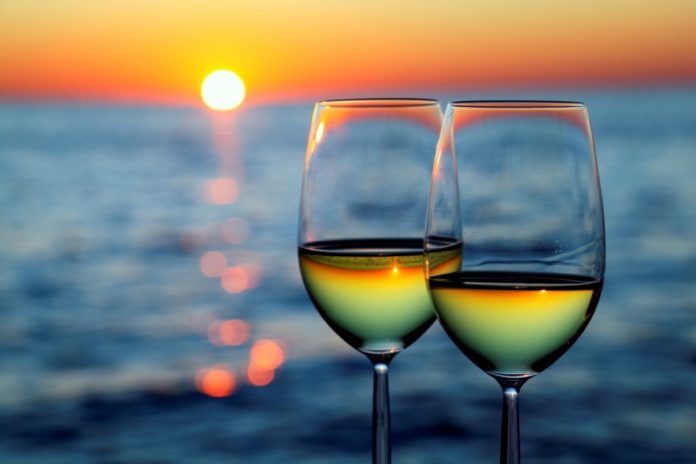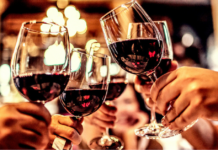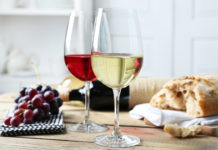Some Different Whites
Everyone who drinks wine, even occasionally, knows Chardonnay and Sauvignon Blanc. Why not take a look at other whites that, while not as well known, are also outstanding in their own right?
Sculpterra, 2017, Heroe Viognier, Paso Robles, California, ($22.00), is an outstanding example of this varietal and it’s from one of the best value regions in California. While this is a white wine with a lot of Chardonnay traits, the biggest difference is the high ABV, (15.3%), unusual in a California white still wine, but great in this case, as it lends itself to lots of spicy food pairings- Thai, Chinese, Indian and Mexican, for example. This one has notes of mango, peaches and pears, with some citrus in the background. Since this wine was fermented in oak, you’ll notice that the balance and acidity are both crisp and pronounced, with a rounded finish.
Ch. de la Chesnaie Muscadet, Sevre Et Maine, Loire Valley, France, 2018, ($15.99). Made famous in Muscadet, a gently rolling, Atlantic-dominated countryside on the eastern edge of the Loire, Melon de Bourgogne is actually the most planted grape variety in the Loire Valley. But the best of it comes from Muscadet Sevre et Maine, a subzone west of the city of Nantes, which is part of the larger Pays Nantais. You should try this varietal with any kind of light and flaky fish, chicken or veal and especially with oysters on the half shell.
Nicosia Grillo, 2016, Sicily, Italy,($112.99), is made from a Sicilian white grape variety most famous for its role in the island’s fortified Marsala wines. It is still widely planted on the island, despite Marsala’s fall from fashion, and is now used most commonly in a variety of still white wines, both varietal and blended. Grillo, when vinified to a high standard, makes a fresh, light white wine with nutty, fruit-driven flavors that include lemon and apple. This wine typically has an intense straw-yellow color, with a nose of citrus fruit and aromatic herbs. On the palate, it offers a soft, refreshing and lingering taste, which pairs perfectly with seafood, shellfish and lobster, as well as vegetables and fresh or soft cheeses.
Another white that has really grown in popularity in the last few years in North America is Albarino from Spain. Albarino wine (“alba-reen-yo”) is a high-quality, light-bodied white that grows mostly in Spain and Portugal. It’s loved for its high acidity, refreshing citrus flavors, dry taste, and subtle saltiness. For seafood lovers, Albarino is a fantastic choice for pairing with dishes like ceviche, fish tacos, seafood pasta, and shrimp. Paco & Lola Albarino, 2017, Rias Baixas, Spain, ($17.99), is a wine that deserves extended sniffing in your glass. It has a strong aromatic intensity which is the result of higher levels of two aromatic compound groups called terpenes and thiols. You’ll notice aromas of lemons, limes, pear, grapefruit, honeysuckle, nectarine, and occasionally orange zest and beeswax, as well as subtle smells of freshly wetted granite and Thai basil . When you taste Albariño, you’ll instantly enjoy its mouth-watering acidity, somewhat weighty mid-palate, saltiness, and long, tingly finish that often has a subtle, bitter note (almost like grapefruit pith).
Ngumu Chenin Blanc, 2018, Western Cape, South Africa, ($22.99), comes from the hillsides where lions once roamed, the vineyards of the Western Cape now flourish. Ngumu, the Swahili word for ‘Complex’, is a series of wines that celebrate the terroir and winemaking traditions of this region. Notes of nectarine, orange, and white flower lead up to a mineral finish on this well-balanced chenin blanc. In South Africa, they often have it with grilled Wildebeest; since we’re fresh out around here, (unless Stop & Shop is holding out on me), you might want to have some Pulled Pork with Potato Salad. It’s really great with this wine and you don’t have to hunt for the meat.
Jaume Serra Cristalino Brut Cava, NV, Penedes, Spain, ($9.99), is a versatile Spanish sparkling wine, made using the Traditional Method, in which the secondary fermentation produces the sparkling wine’s bubbles which occurs in the bottle. Its fresh, toasty nose, beautiful citrus, green apple and mineral flavors, supple, lively mouthfeel, and clean, crisp finish make it a real “go-to” celebratory wine. Enjoy it on its own and with sushi, seafood, fried foods and Asian dishes.
Talk To The Wine Guy at jdris8888@gmail.com









